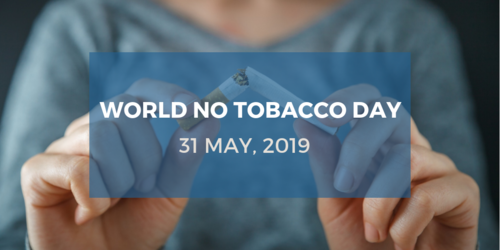On this World No Tobacco Day (31 May), ERS alongside members of the Forum of International Respiratory Societies (FIRS) calls for renewed efforts to strengthen the implementation of the World Health Organization (WHO) Framework Convention on Tobacco Control (FCTC) in all countries, in order to work towards achieving the United Nations (UN) Global Goals for Sustainable Development [1] to ensure a healthy life and promote well-being for all, at all ages.
Tobacco contributes to millions of deaths globally each year, and smoking tobacco cigarettes is the main cause of many lung diseases. Approximately half of COPD deaths and eight out of ten cases of lung cancer are attributable to current and past smoking, and tobacco also fuels the global epidemic of tuberculosis.
Professor Tobias Welte, current president of both ERS and FIRS, explained: “Tobacco smoking is without doubt the single most important risk factor for respiratory disease. We know what is effective in reducing the rates of tobacco smoking: high prices on tobacco, legislation to protect children and adults from second-hand exposure, strict marketing bans, regulation of tobacco products, packaging and point-of-sale displays, raising public awareness, and limiting interactions between public officials and the tobacco industry.
“But to further encourage all current smokers to quit so that we can reduce morbidity and mortality from smoking over the next two decades and beyond, these tactics must be combined with effective and free smoking cessation services, which ideally includes professional counselling and free or subsidised smoking cessation medication.”
The WHO says that the speed of action to reduce tobacco demand [and consequent death and disease] is failing to keep up with global and national commitments to decrease tobacco use by 30% by 2025, and warns that if current rates continue, the world will only achieve a 22% reduction in the use of tobacco by 2025.
To work towards the UN Global Goals for Sustainable Development for further implementation of the WHO FCTC, FIRS calls for stronger efforts to:
- Increase taxes and prices on tobacco products
- Implement plain/standardised packaging and/or large graphic health warnings on all tobacco packages
- Improve public access to free smoking cessation services
- Enact and enforce comprehensive bans on tobacco advertising, promotion and sponsorship
- Eliminate exposure to second-hand tobacco smoke in all indoor workplaces, public places, and on public transport
- Implement effective mass media campaigns that educate the public about the harms of smoking/tobacco use and second-hand smoke
Tackling tobacco is key to reducing morbidity and mortality from lung disease across the world, which is why we must continue combining our efforts to maintain pressure upon policymakers, to educate the public, and to encourage and support smokers to quit.
Resources for World No Tobacco Day
Infographics
Tobacco smoke contains more than 4,000 chemicals, many of which are toxic and can cause cancer. Download in:
Only 15% of the world’s population live in Europe, but nearly a third of the burden of tobacco-related disease occurs in Europe. Download in:
Nicotine addiction is very powerful and only 5–10% of ‘quit attempts’ are successful. Download in:
With thanks to the Tunisian Society of Respiratory Diseases and Allergies (STMRA) for translation.
Scientific and educational resources
- Online learning resources: smoking cessation collection
- Selected articles from ERS publications: smoking cessation and tobacco
- Event: ERS Masterclass on airways disease
- Free ebook download: ERS Monograph on Smoking Cessation – offer ends 17 June, 2019
- EU Project: EUREST-PLUS – Policy implementation to reduce lung diseases
- ERS White Book chapters on Tobacco smoking and Passive smoking
- Catch up with our Twitter #NoTobaccoChat focused on stopping the tobacco epidemic
Advocacy and ERS positions
ELF resources to share with patients and the public
Factsheets:





